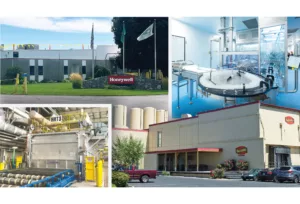Federal sewage-treatment regulations found effective
18-year-old guidelines lead to 94 percent to 99 percent elimination of pathogens
Pathogen levels in wastewater have dropped since the implementation in 1993 of federal regulations on treating sewage, research conducted at the University of Arizona, in Tucson, Ariz., has found.
A recently released study conducted by university researchers tracked the incident of pathogens in biosolids during a 19-year period in Tucson. In the same study, the researchers also analyzed pathogen levels in biosolids at 18 wastewater treatment plants in the U.S. The treatment guidelines have proven to be extremely effective, with 94 percent to 99 percent of all pathogens in biosolids eliminated during wastewater treatment, the study data show.
"This is the first major study of its kind since federal regulations for wastewater treatment were implemented in 1993," says Dr. Ian Pepper, one of the authors of the study and the director of the University of Arizona's Environmental Research Laboratory.
The term biosolid refers to sewage sludge that has undergone a certain level of treatment and is divided into two classifications. Class A biosolids undergo a high-level treatment and don't show any signs of pathogens. In contrast, Class B biosolids receive a lower amount of treatment and have been found to contain bacterial, parasitic, and viral pathogens.
Around 5.5 billion kilograms of biosolids are produced annually in the U.S., with the vast majority being Class B. Approximately 60 percent of the annual production of biosolids is used as agricultural fertilizer.
"By analyzing the data before and after 1993, the Arizona group was able to determine the influence of the regulations on the incidence of pathogens in Class B biosolids," Pepper says. "The study showed that fecal coliforms and virus concentrations are now generally lower than before the 1993 regulations."
Class B biosolids from a Tucson wastewater treatment plant were analyzed from 1988 to 2006. Additional samples were collected between 2005 and 2008 from wastewater treatment plants in California, Florida, Arizona, Michigan, Minnesota, Wisconsin, Nevada, Oregon, Washington, and Wyoming. All of the samples were analyzed at the University of Arizona.
The study was published in the NovemberDecember 2010 issue of the Journal of Environmental Quality, a peer-reviewed, international journal focused on environmental quality in natural and agricultural ecosystems. The journal is published six times a year by the American Society of Agronomy, Crop Science Society of America, and the Soil Science Society of America.
Related Articles

_c.webp?t=1763626051)

_web.webp?t=1764835652)